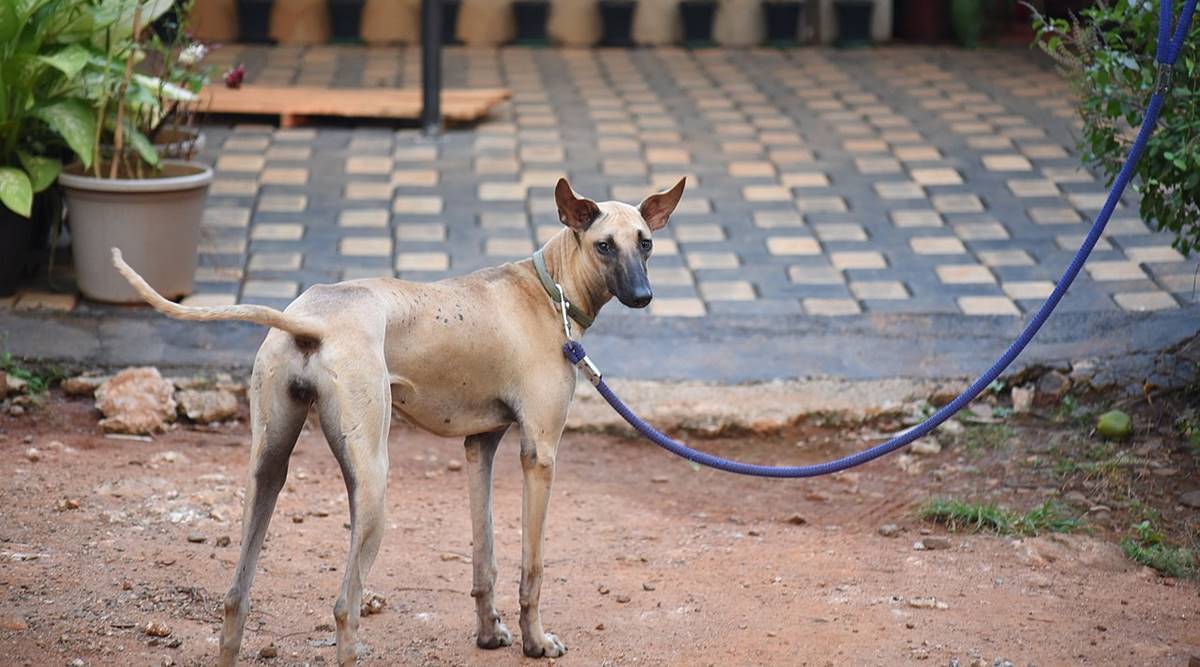 Indian dogs are more disease-resistant than foreign breeds. (Photo: Wikimedia Commons)
Indian dogs are more disease-resistant than foreign breeds. (Photo: Wikimedia Commons)Swetha Mahesh of New Delhi brought home a rescued Indie dog around the time the coronavirus-led lockdown first hit. Those were the days when restaurants were shut and people were wary of stepping out to feed strays.
“Indie dogs do not get due credit. I think Indie dogs are very intelligent, hardy, highly trainable, and look amazing,” Swetha told indianexpress.com.
Prime Minister Narendra Modi recently urged people to adopt Indian dog breeds, mentioning specific Army dogs and their contributions towards national security. What we commonly see in our country, however, is that most dog owners go for foreign breeds instead of Indian dogs.
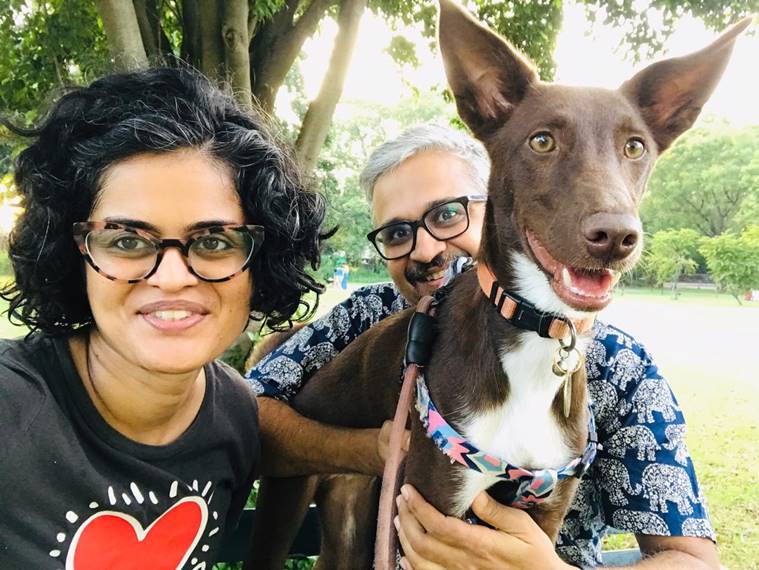 Swetha’s pet dog
Swetha’s pet dog
Foreign dogs vs Indian dogs
One of the most common arguments is that foreign breed dogs look better, besides being more receptive to training. But Sangeeta Panicker from Noida, who owns a Japanese spitz as well as an Indie, says: “Now that I am raising an Indian dog, I would say there is no dog better than Indie. They are very easy to train, and they connect with you quite well. The best thing about Indian breeds is that they have strong immunity. They usually do not get infections or allergies common in their foreign counterparts. They are also very low maintenance.”
Panicker’s experience is shared by many pet owners. According to experts, the secret for the Indie dog’s hardiness may lie in evolution, apart from the fact that foreign breeds need to adapt to Indian climates. Naturalist and expedition leader Adtiya Panda from Odisha says: “In a naturally evolved breed, only the fittest survive and the flaws are bred out. Thus, Indian dogs are generally very healthy and their average life expectancy, under good care, is over 15 years. Genetic health ailments, such as hip dysplasia and others, are extremely rare.”
Divya Puri from New Delhi agrees, from her personal experience. “We adopted three Indian dogs we found injured on the road. I have had a Dobermann, a Labrador and a Rottweiler in the past, and I would say Indian dogs are much easier to maintain. They do not have a lot of medical issues. For example, a Labrador would get arthritis or hip dysplasia (medical term for a hip socket that does not fully cover the ball portion of the upper thighbone). With desis, that does not happen.”
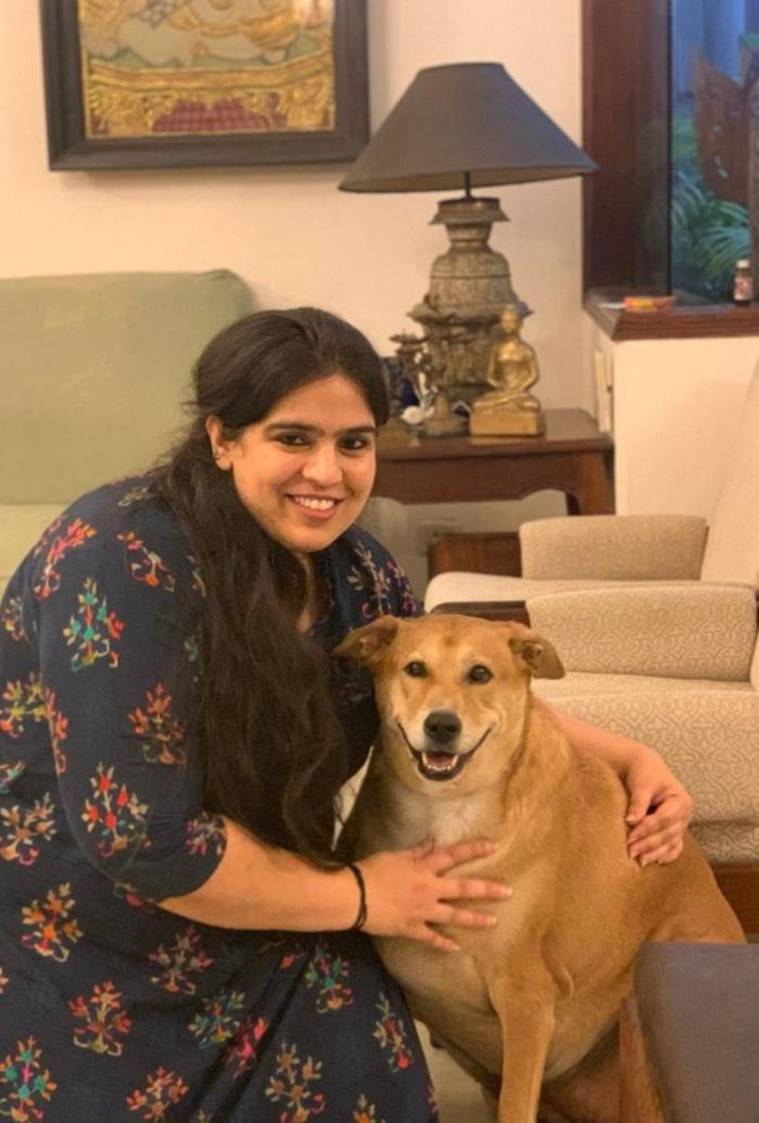 Divya Puri with her pet Indian dog
Divya Puri with her pet Indian dog
New Delhi pet owner Aniruddho Chakraborty says foreign dogs are “promoted” better, so people get them, but some abandon them because of the level of care they demand. Chakraborty owns a beagle-Labrador mixed breed dog. “From whatever I know of the adoption circuit, a lot of these foreign breeds end up abandoned and are put up for adoption. Of course, foreign breeds are promoted more. A beagle, for instance, is very hard to handle but looks cute. Some of these foreign dogs are not designed for this climate.”
Keeping a foreign breed is also a status symbol. Swetha says: “I think people largely go for a foreign breed because they are associated with a certain class and an elitist outlook.”
The preference for foreign breeds can further be attributed to a colonial hangover, according to veterinary physician Dr Aditya S Dhopatkar. “The British had imported some of the breeds we keep today. And the Indian elite class had already started keeping these before 1947. Even today, kennel clubs in India are affiliated to organisations in the West, for which they pay a fee. At these clubs, you get breeds of particular characteristics and looks for Rs 10,000-20,000. Not all these foreign breeds are European or American; some are also Sino-Tibetan, who are delightful because they are tiny.”
Read| Do’s and don’ts for taking care of pets, stray animals amid corona crisis
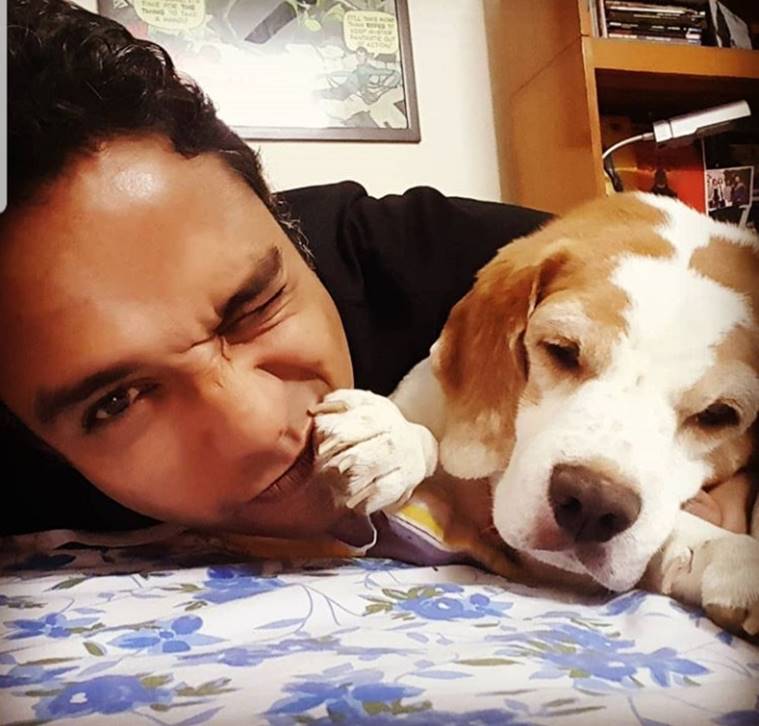 Aniruddho with his pet dog
Aniruddho with his pet dog
Not all Indian dogs are the same
“Street dogs”– that is the term generally used when we refer to an indigenous dog. However, that perhaps stems from our lack of awareness about these animals. Dr Dhopatkar said it would be wrong to think of Indian dogs as a homogeneous breed. Since medieval times, Indian dog breeds have evolved as part of historical cross-border alliances and conquests.
“We have breeds native to Tibet found in Ladakh, Uttarakhand, Himachal Pradesh or Arunachal Pradesh. These Tibetan breeds look different from the dog you get in cities. In Karnataka, you find the Mudhol hound, named after the northern region of the state. The breed is also found in Maharashtra,” said the veterinarian.
According to experts, the Mudhol hound, known by various names like Pashmi or Caravan, is a direct descendant of the Saluki dog breed, a desert hunting hound, that finds mention in ancient Arabic poetry.
Saluki is closely related to the Afghan hound. According to petsworld.in, the Afghan hound was brought to the Indian subcontinent by Pathans and Rohillas who settled in the Deccan Plateau, which explains why they are found in large numbers in the region. These dogs have a tall lean frame with long legs, and have excellent stamina and flexibility.
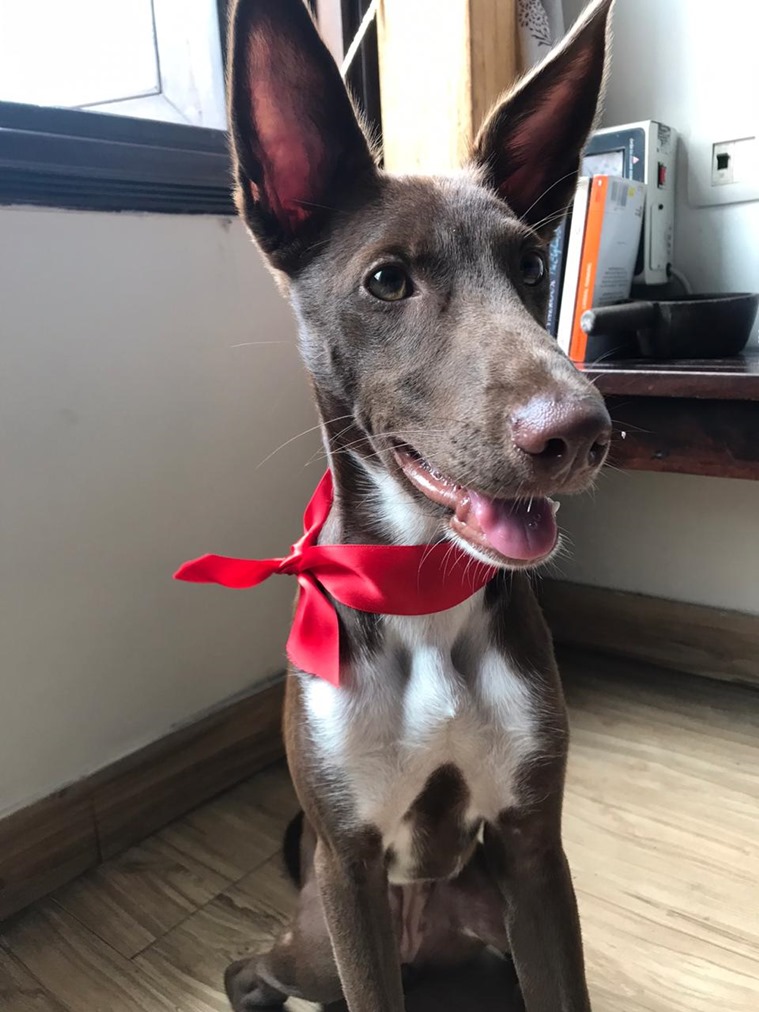 “Street dogs”– that is the term generally used when we refer to an indigenous dog. However, that perhaps stems from our lack of awareness about these animals. (Photo: Divya Puri)
“Street dogs”– that is the term generally used when we refer to an indigenous dog. However, that perhaps stems from our lack of awareness about these animals. (Photo: Divya Puri)
The Book of Indian Dogs by S Theodore Baskaran mentions Rampur hounds, which were kept by nomadic herders called Thilaris in Maharashtra and primarily used for hunting. The book also talks of Banjara hounds, owned by a “nomadic tribe of gypsy appearance and habits”.
Which is the typical Indian dog?
Adtiya Panda has come up with an Indian name for the native dog breed: ‘INDog’. “A typical native Indian dog would not be the one from the Himalayan-Tibetan border or the Burmese border that has come to princely states. Neither is he the one that used to belong to the nomads nor is he from the Afghan frontier. The quintessential Indian dog has no frontier genetic exchange. They are the indigenous ones,” he said.
Panda claims in indog.co.in, “The Indian Native Dog, commonly referred to as the ‘pariah’ dog, and erroneously referred to as ‘mongrel’, ‘mutt’ or ‘stray’, in fact, represents one of the oldest breeds of domestic dog and belongs to the ‘primitive’/’aboriginal’/’Pariah’ group of Canis familiaris. It is the naturally evolved and perfected prototype of the domestic dog.”
Beautiful photo! https://t.co/aHcugPEwFp
— Narendra Modi (@narendramodi) August 30, 2020
Characteristics of a native Indian dog
In his article, Panda specifies the characteristics of the native Indian dog. “It is a medium-sized dog of square to slightly rectangular build and short coat. The dog has a double coat, a coarse upper coat and a soft undercoat…The jaws have a clean, scissor bite.”
Regarding their health, he writes, “They have very few health concerns and thrive with minimal ‘maintenance’, especially in tropical weather. They do not stand cold very well. The skin needs very little grooming, and the dogs themselves are relatively clean. They almost have no body odour.”
Adopting Indian dogs
“Indian dogs, such as Rampur hound, Mudhol hound and Dhangari kutra, are evolved to be outside the house or at the periphery, instead of the bedroom. These dogs are mostly hunters, so it is difficult to keep them in a house with a pet cat or smaller breeds of dogs. So, if you want to keep an Indian dog, you have to look for the non-nomadic type,” said Dr Dhopatkar.
Also, the dogs that are commonly known as Indie may not be completely indigenous, although they may look like the quintessential ‘INDog’. “Most of them look fairly similar, but a city dog has not remained an absolute pure ‘INDog’. Because some decades of city life would mean a German Shepherd or Dobermann went out and mated with a stray, or say a pomeranian mated resulting in a smaller Indian puppy. So, an Indie stray dog being adopted may not be classically Indian. Some of these need a certain amount of social training before they can be domesticated,” the veterinarian explained.
For more lifestyle news, follow us: Twitter: lifestyle_ie | Facebook: IE Lifestyle | Instagram: ie_lifestyle